It’s no secret 2020 has been a bit of a monster. With the worsening pandemic, the events surrounding racial inequality and civil unrest, the rampant burnout, and the growing sense of polarization and discontent, it has already been one heck of a year, folks.
And while it’s only August and things will likely get worse before they get better, it’s worth taking a step back to acknowledge that amidst the uncertainty, turmoil, and grief 2020 has also held a lot of good, too. From the commitment and sacrifice of first responders everywhere to the rediscovered possibility for growth, creation, and new discovery, to John Krasinski and his “Some Good News” YouTube mini-series, this has been a year of several monumental setbacks followed by millions of small yet mighty wins for humanity. Despite all the terrible things that continue to happen around us, we humans continue to show up for one another and prove that we are better than this. That we are more capable than this. That we have the power to get through this. That 2020 is not only a year of grief and trauma but also one of hope and possibility.
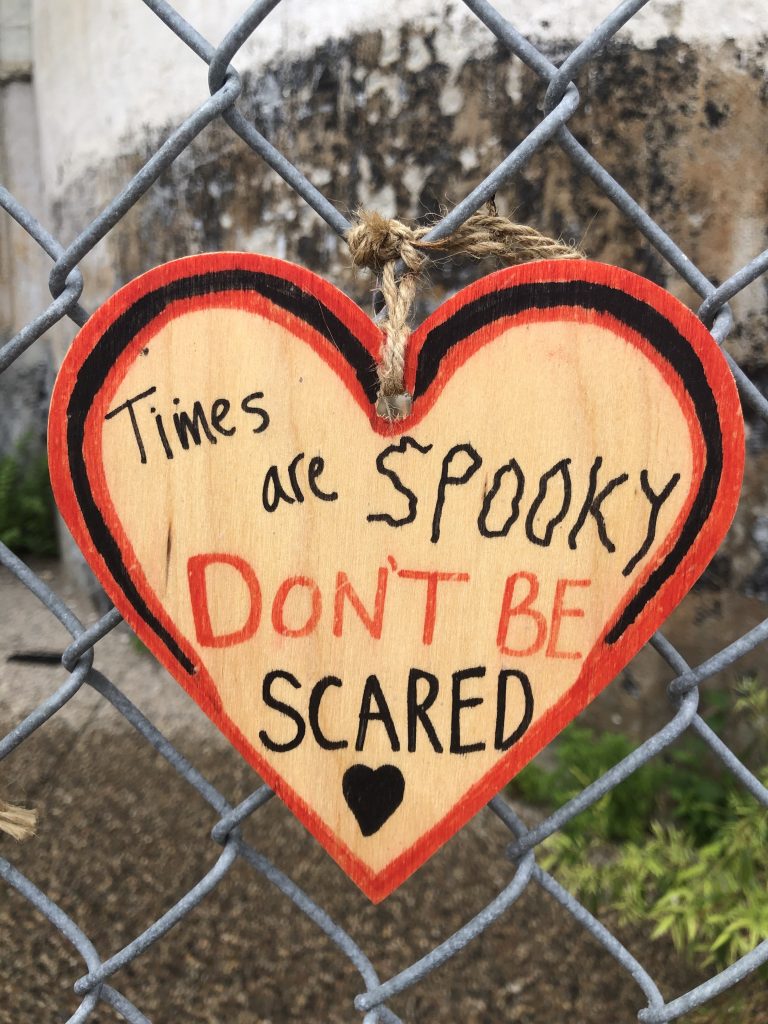
Last Saturday I was watching the local morning news when a specific segment caught my attention and prompted me to pause. With many traditional exhibits and museums temporarily closed due to COVID, The Minnesota Historical Society recently decided to get creative, work around the seemingly impossible constraints of the present moment, and bring art directly to the people. The result is a temporary pop-up exhibit, “History at Heart,” that acknowledges the inherent weight and power of this particular moment in time. Indeed, the installation shares:
“Our response to the COVID-19 pandemic and to the murder of George Floyd by Minneapolis Police is defining who we are. We are grieving. We are longing. We are dreaming. With your heart, share your message or respond to someone else. Or ask a question of your own.”
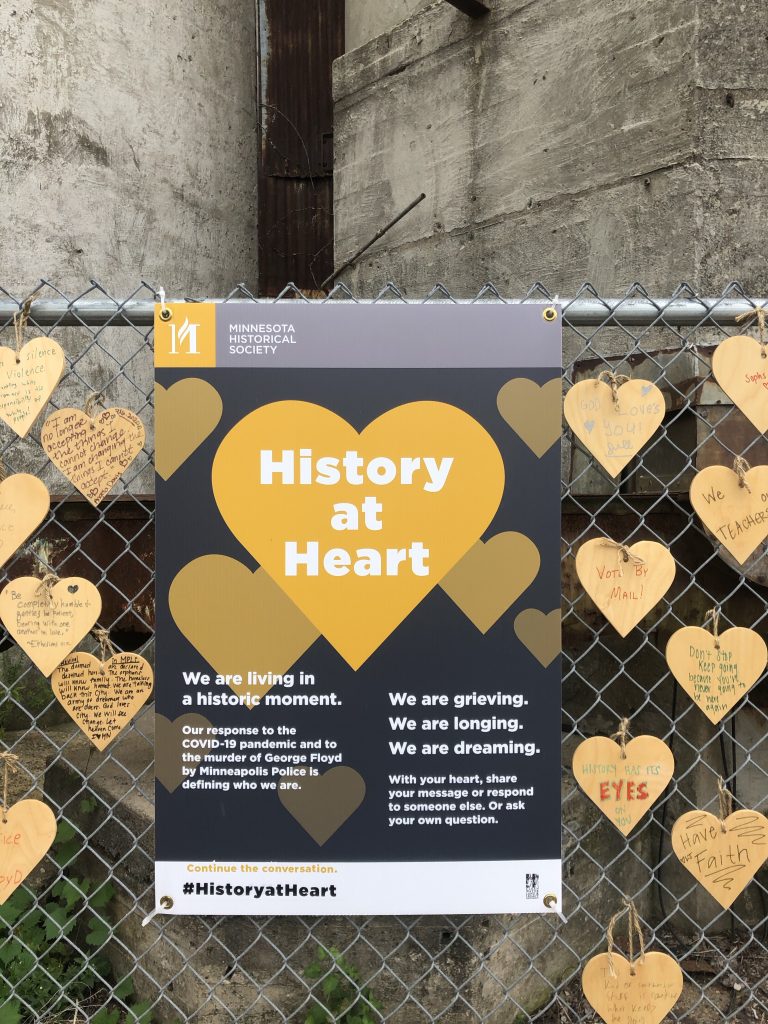
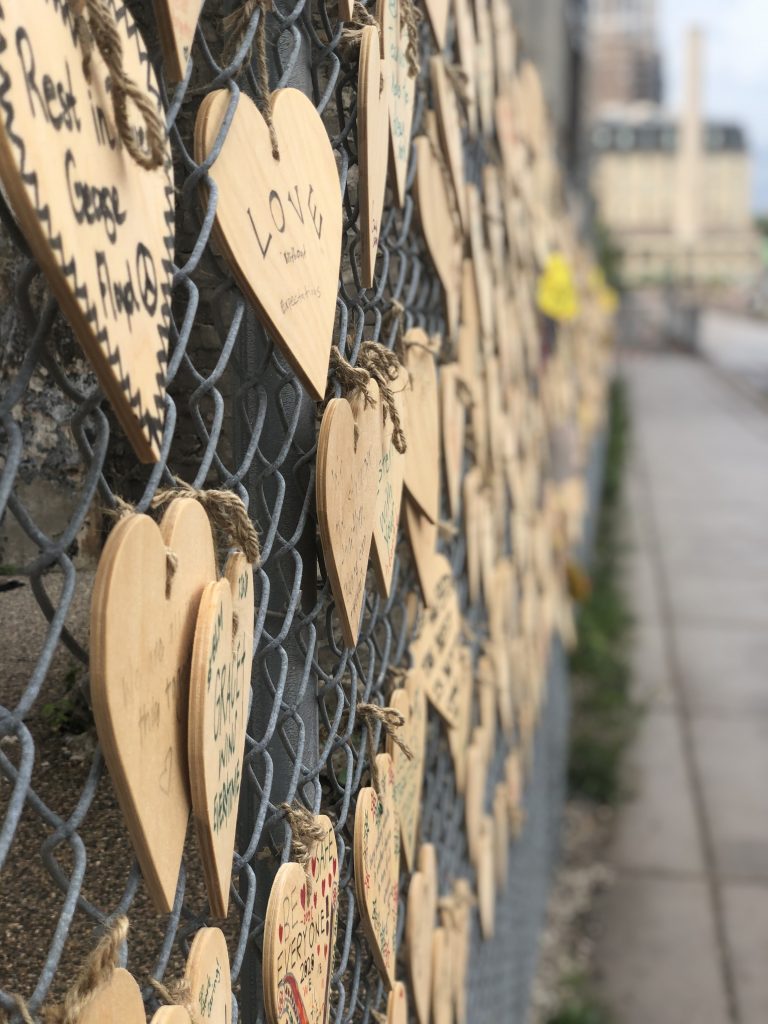
I love the immense power and inherent simplicity of this incredibly humble, low-res exhibit. Stripped of pomp, circumstance, and the need for the typical gloss and sheen society so frequently demands, “History at Heart” invites the opportunity for raw, honest thought, vulnerable wishes, and a fervently vocal commitment for change. At its core it invites a dialogue between community members—those who are grieving, those who are experiencing trauma, and those who are looking for a clearer, more hopeful path forward—and encourages people to pause, reflect, speak, and commit to a future that is better than the world we currently live in.
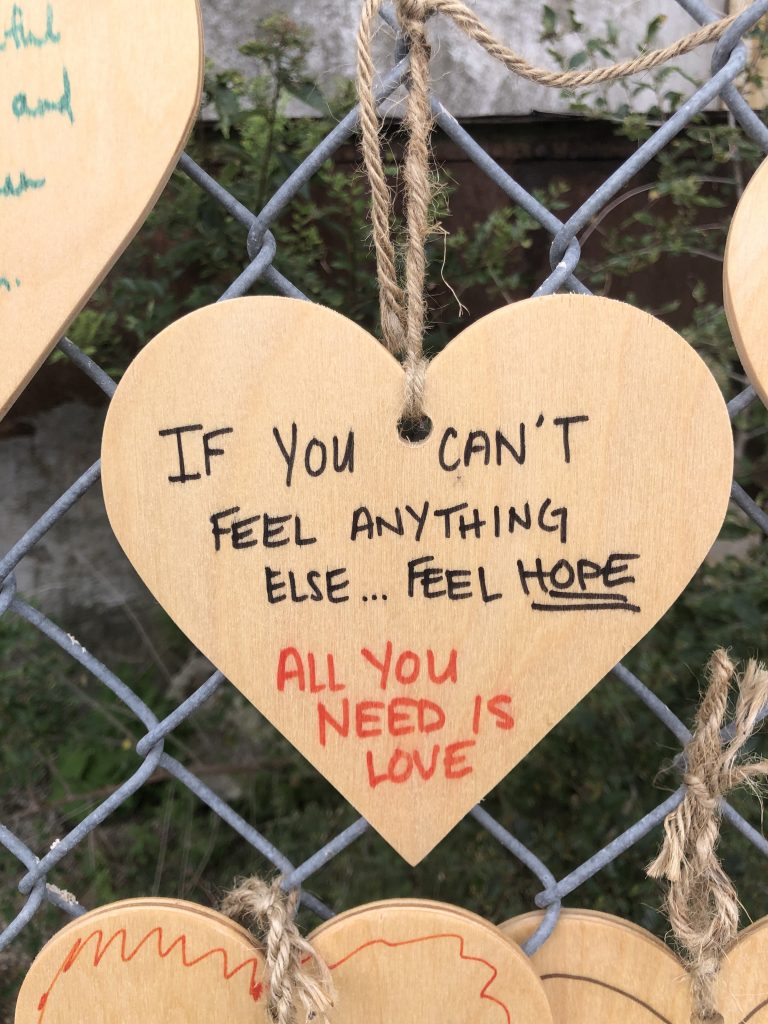
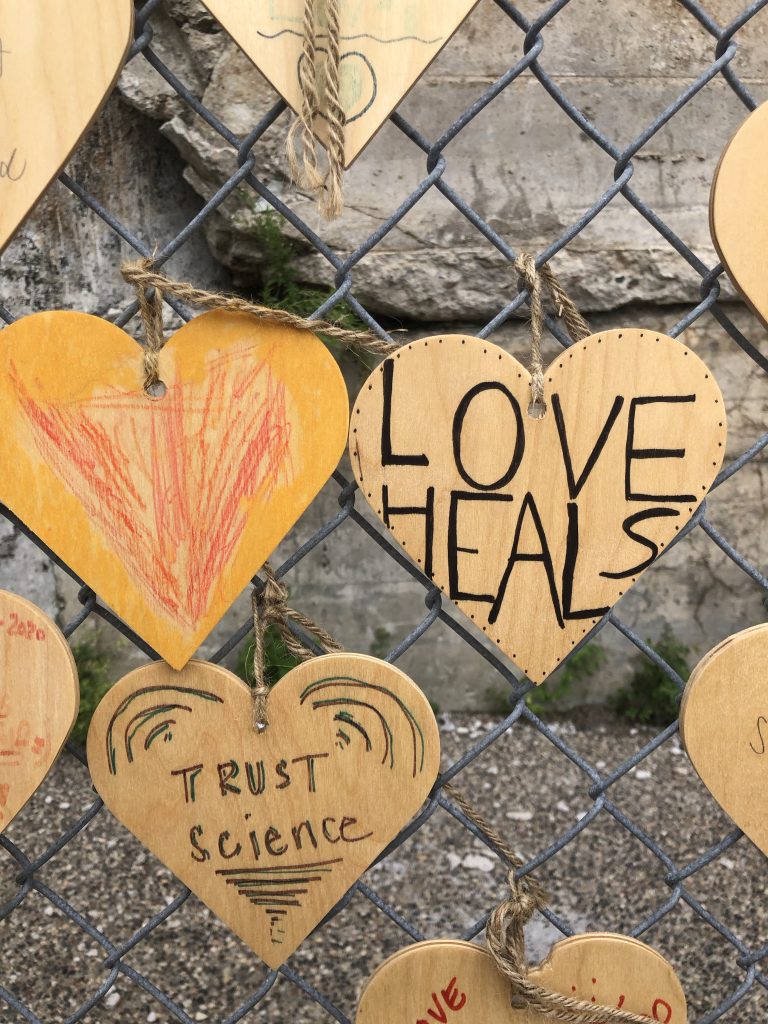
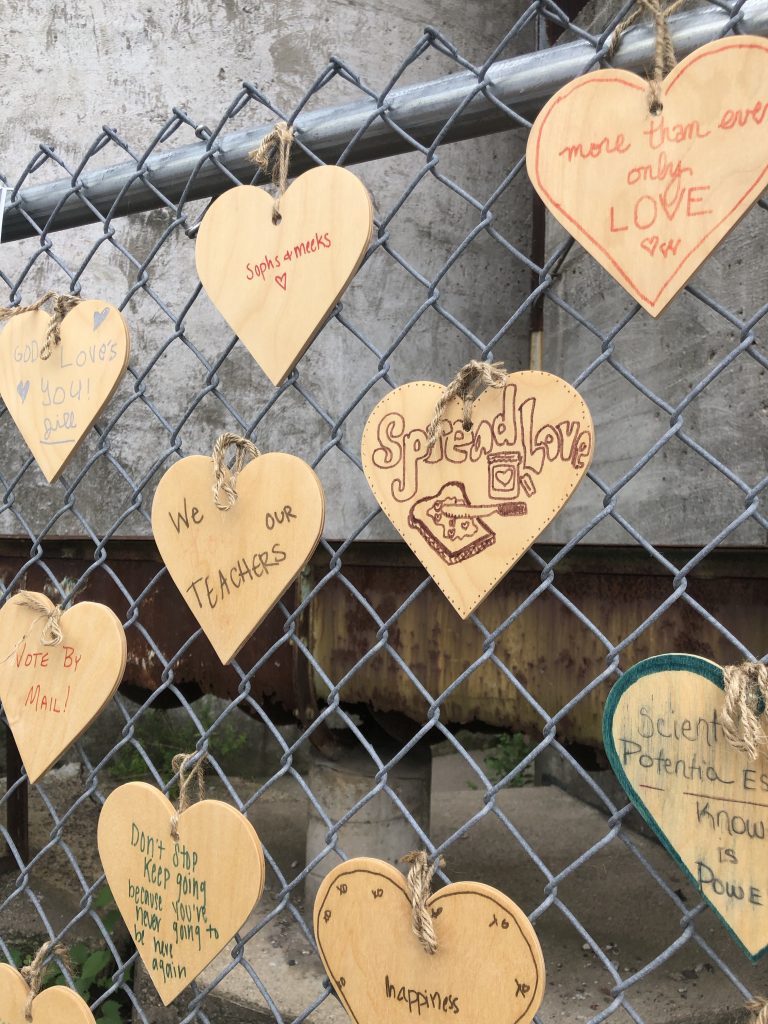
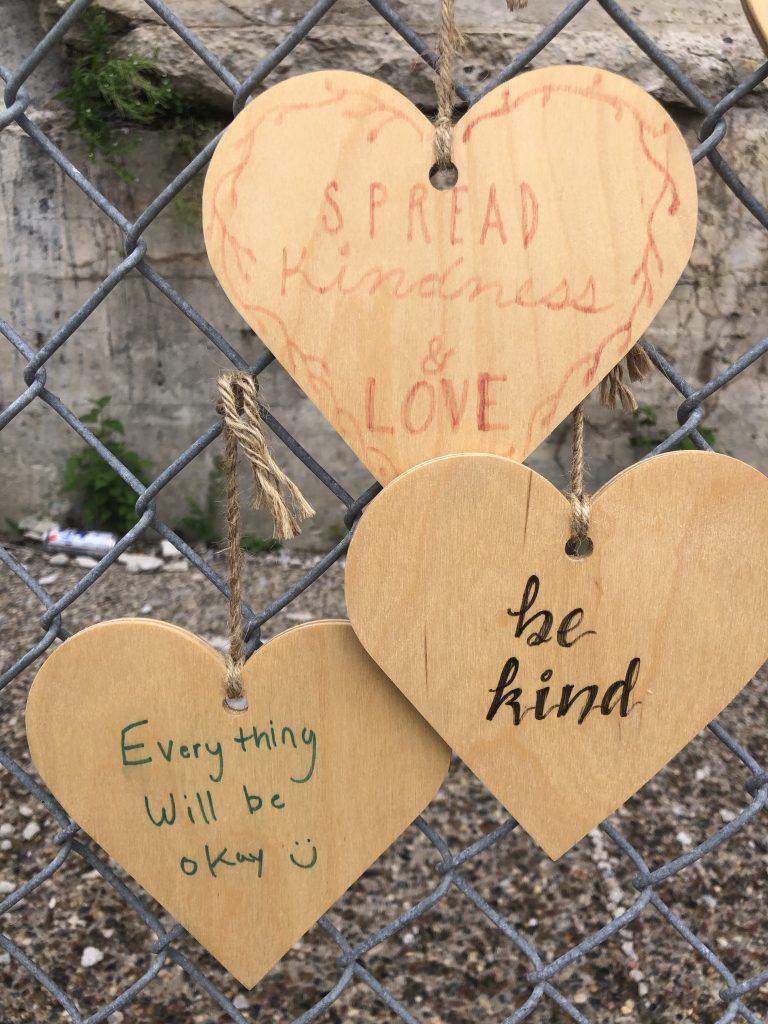
I also appreciate the straightforward yet evocative symbolism behind these wooden hearts. At our core, we humans are a community of hearts—of living, breathing, beating thoughts, minds, and souls that are full of ideas, hopes, fears, possibilities, and longings. This imagery is inherently human, but it carries other distinct nuances that are important here as well. Typically, a “Purple Heart” is a United States military decoration awarded to those wounded or killed while serving others. It’s an iconic symbol of honor and sacrifice, a sign of selfless service for the greater good. And, while I don’t mean to dilute the significance of this military distinction, it is interesting to consider the larger role “purple hearts” play in the seemingly ordinary yet heroic ways humans have chosen to show up for one another over the last several months. While many of us haven’t lived through a literal war, over the last six months the fear, scars, and sacrifice have been very, very real. This year has brought countless hurdles, struggles, and even battles, and many of us—regular, everyday civilians—have risen to meet the challenge with extraordinary courage and concern for their fellow man. And, while this distinct brand of bravery doesn’t necessarily call for a formal award or medal of honor, it does deserve intentional recognition and sincere celebration—even if that’s achieved through a simple wooden heart.
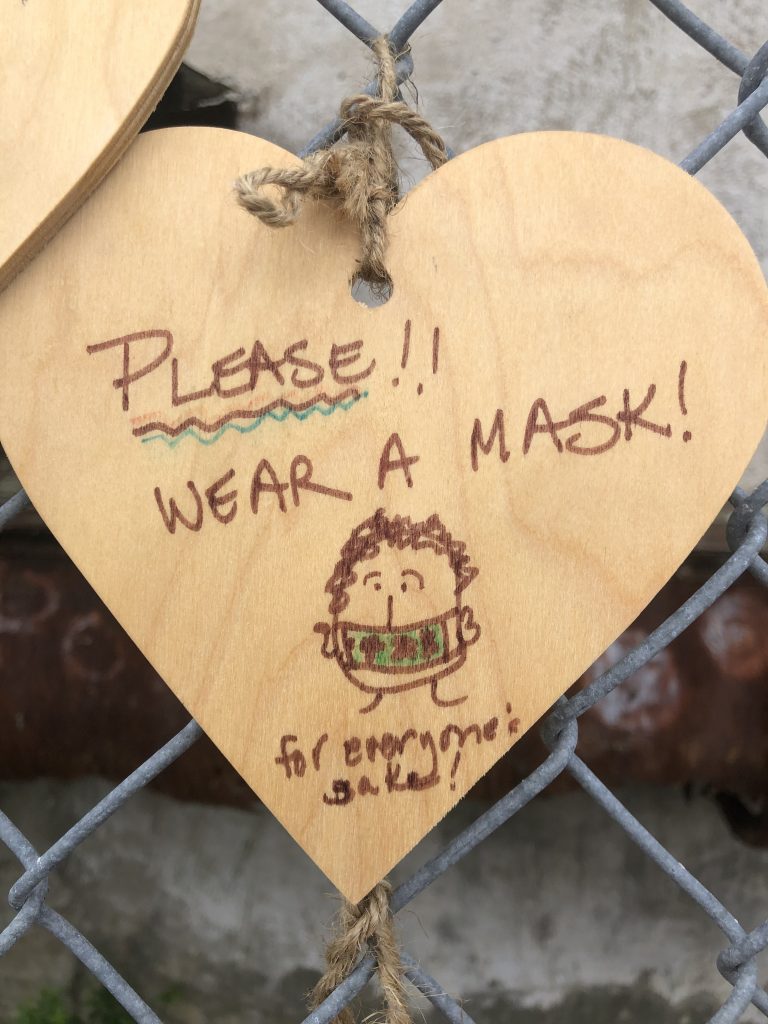
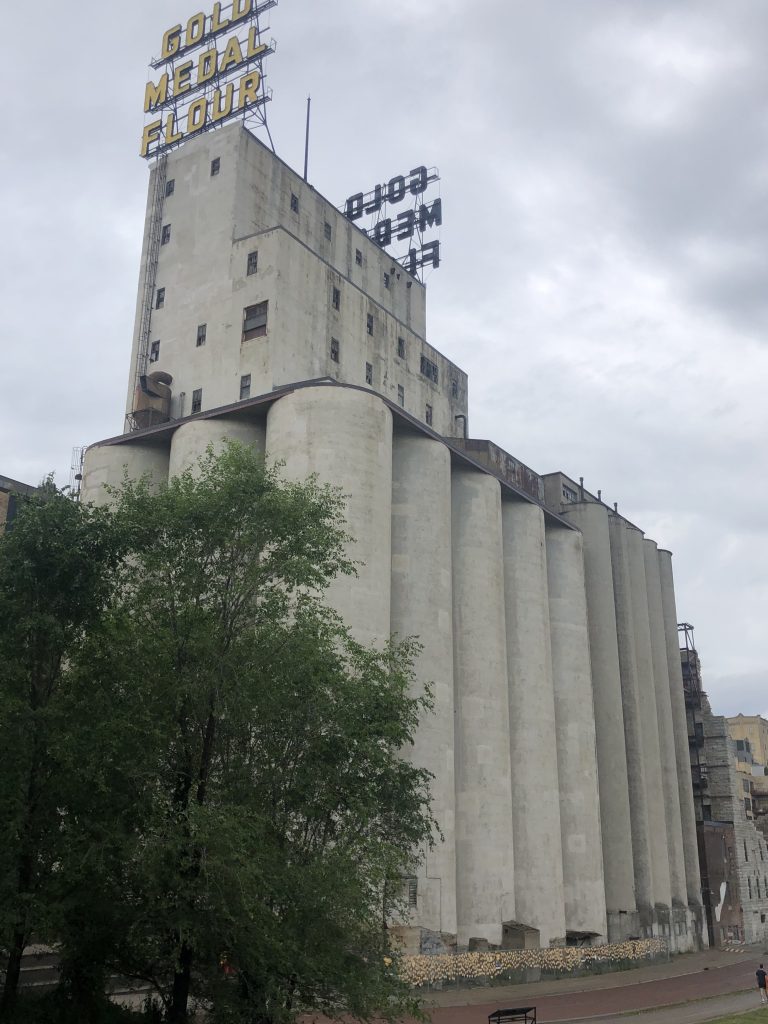
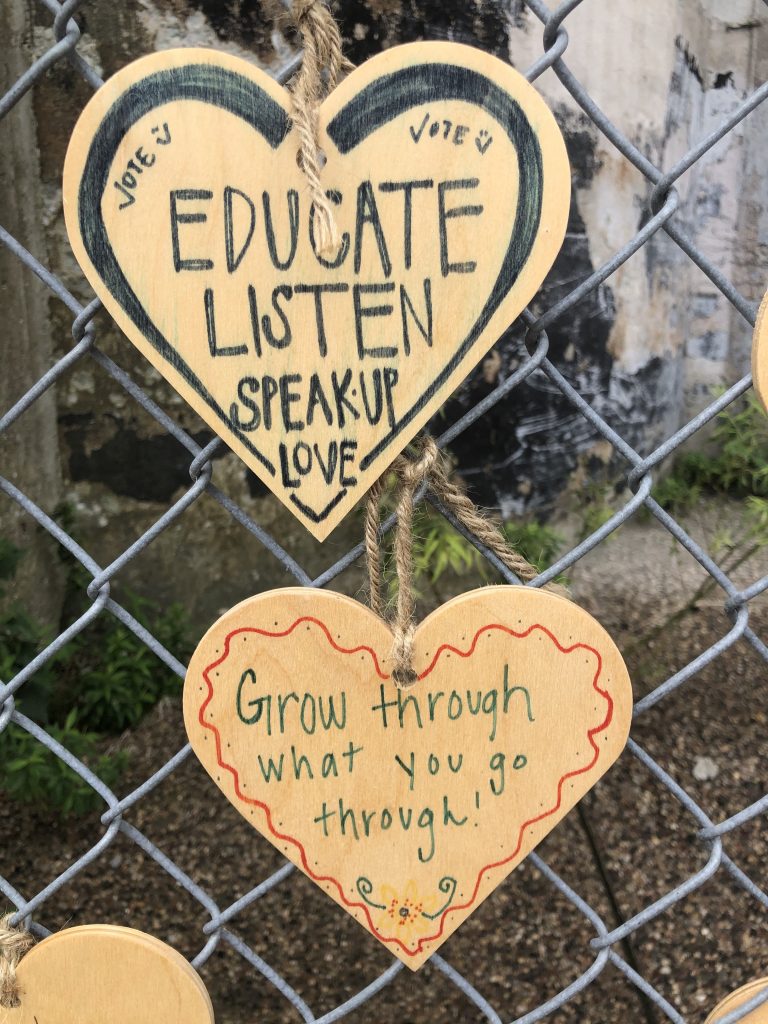
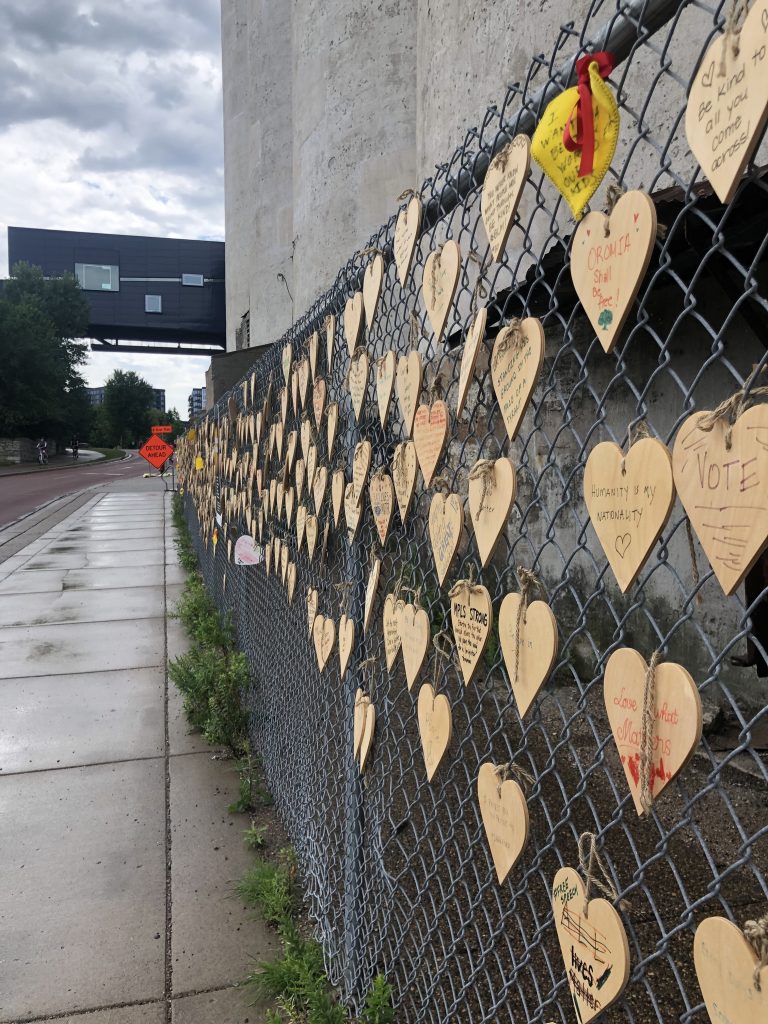
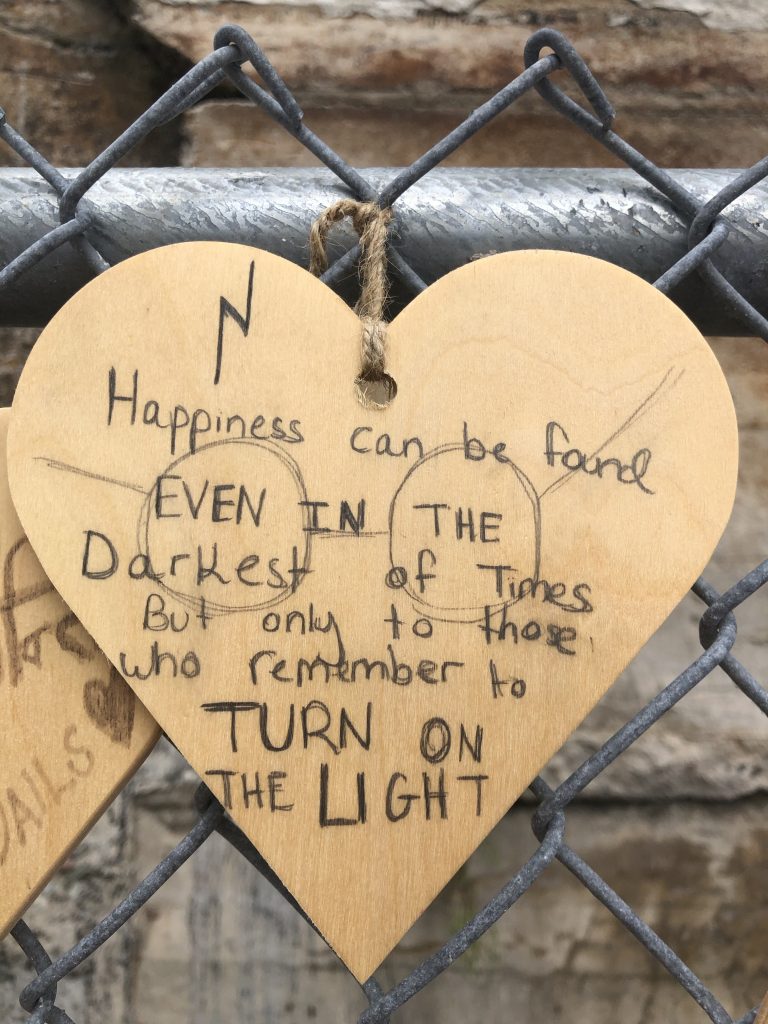
Over 1,000 wooden hearts line the fence outside Mill City Museum, a historical site that sits on the scenic banks of the Mississippi. To make this idea come to life the Minnesota Historical Society teamed up with local artist Kelsi Sharp who created the beautiful wooden hearts that melodically clack and clang in the wind, making their presence undeniably known to all passersby. The exhibit opened about a week ago, and within a matter of days all the hearts were filled out, hung, and visible to tell the stories of those brave enough to expose their dreams to the world in the hopes that doing so might breathe them into existence.
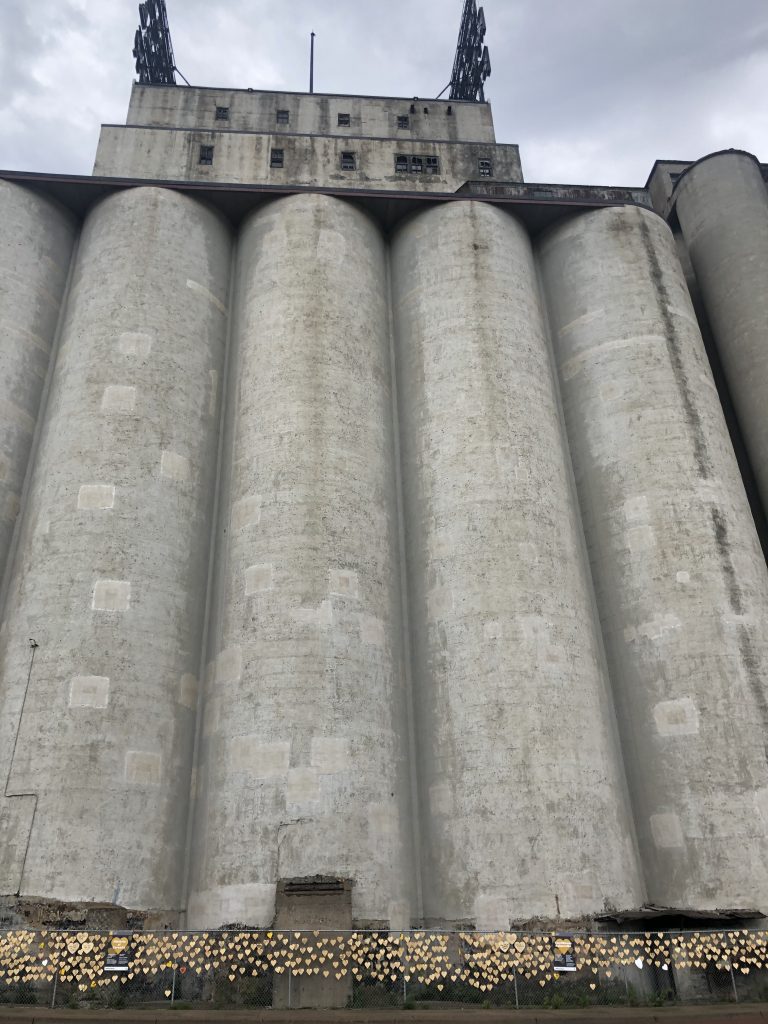
The power of this exhibit comes with its honesty: This is the voice of the people, what real Minnesotans are saying about this pivotal moment in history. Art—particularly community art—has long functioned as a tool for dialogue and healing: It’s an important means of expression, a way to come together and find meaning through a shared experience. It’s a space for individuals to find human connection in a year where we are so deprived of it.
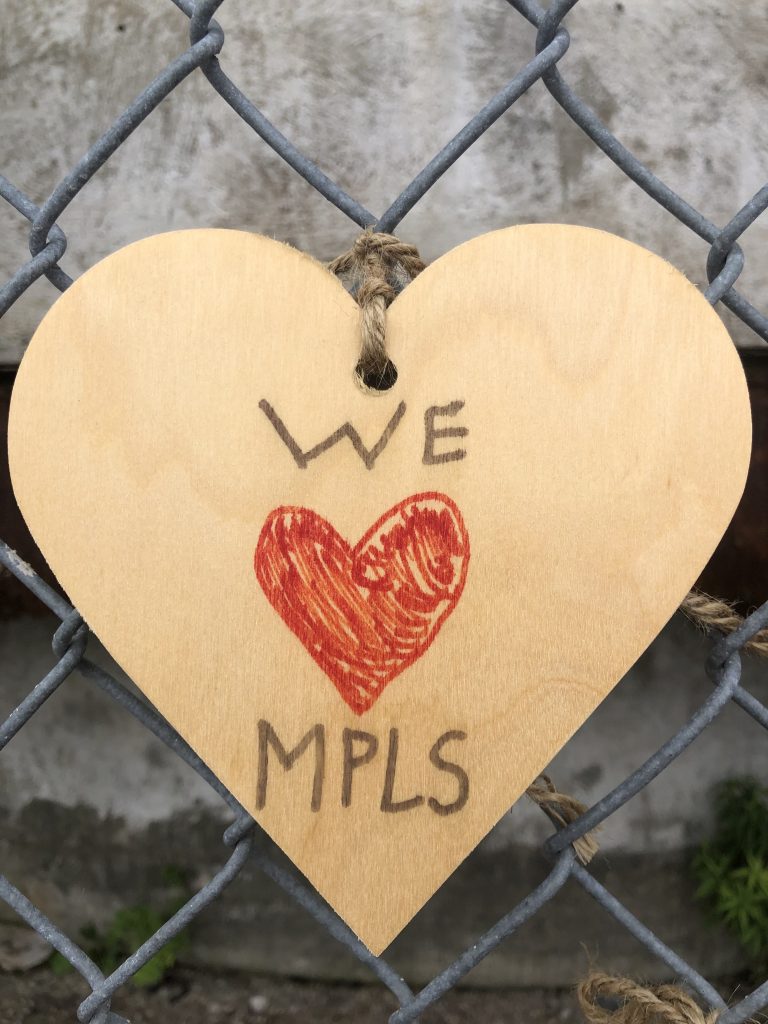
Clearly this concept resonates with the larger community: What started in Minneapolis has since caught like wildfire and expanded to other parts of Minnesota including St. Paul and the Split Rock Lighthouse in Duluth. These wooden hearts have opened the invitation to speak and share. And it is evident Minnesotans have something to say:
If you can’t feel anything else, feel hope.
Grow through what you go through!
Humanity is my nationality.
We all do better when we all do better.
The only way out is through: Be kind.
You are the protagonist in your own story.
Qué hace ud. diferente ahora[1]?
Just do better. That’s it.
Watch your thoughts… They become your words. Watch your words… They become your actions. Watch your actions… They become your habits. Watch your habits… They become your character. Watch your character… it becomes your destiny.
Listen to learn. Learn to love.
Work hard. Be kind. Think critically.
Make some good trouble.
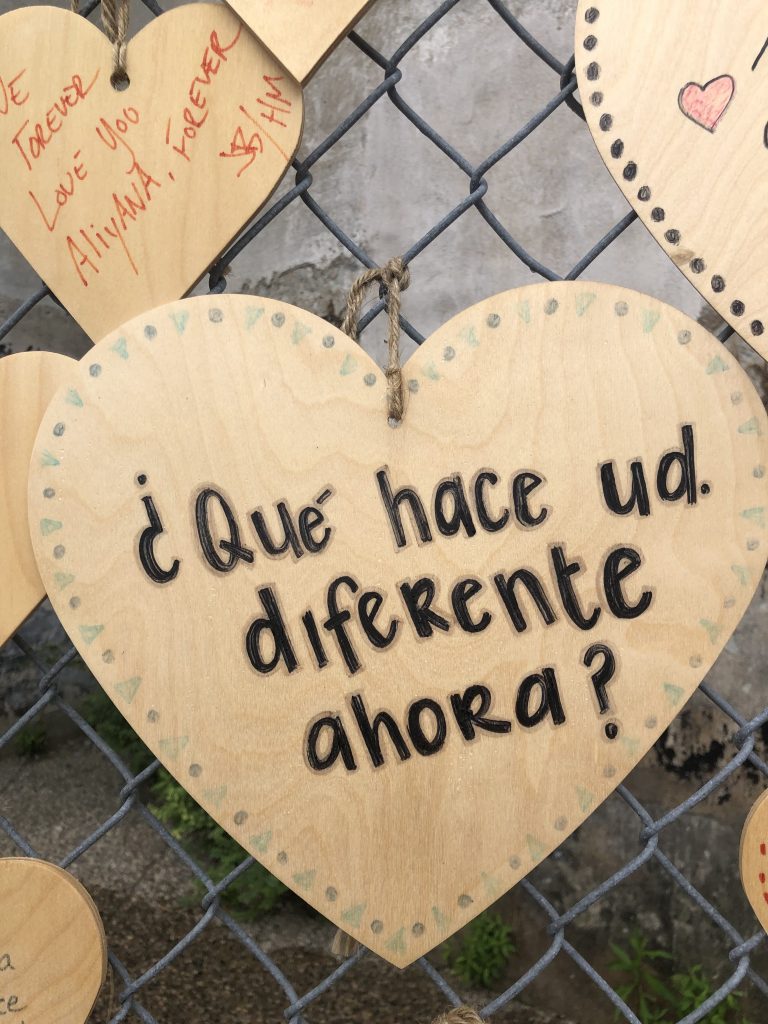
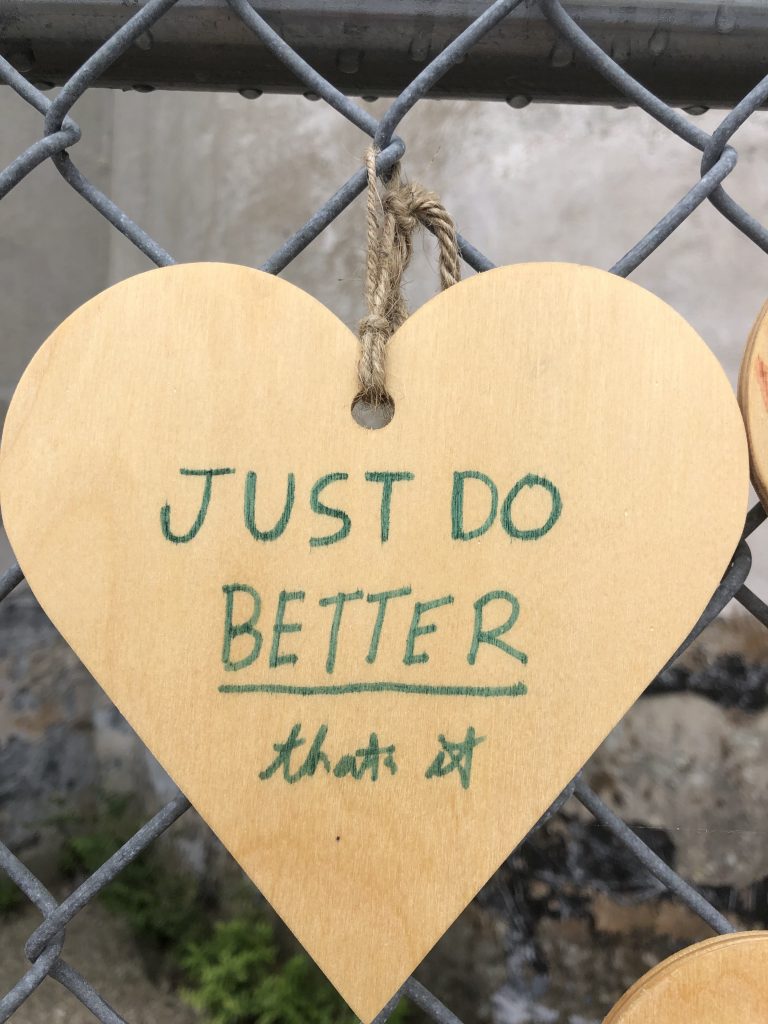
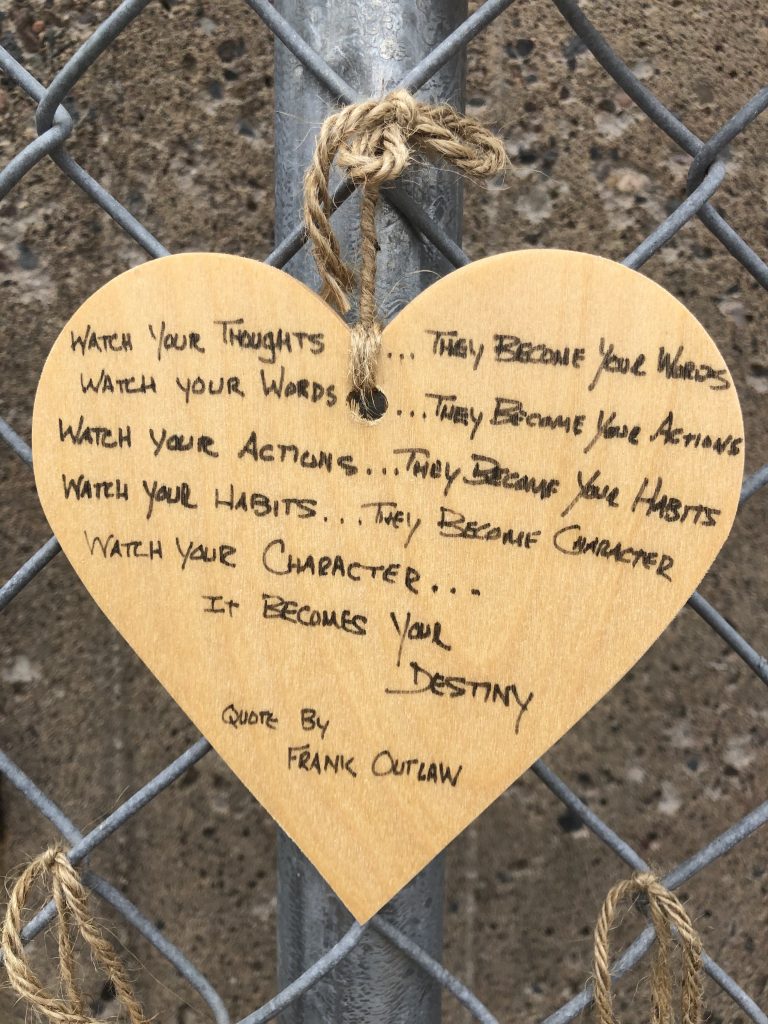
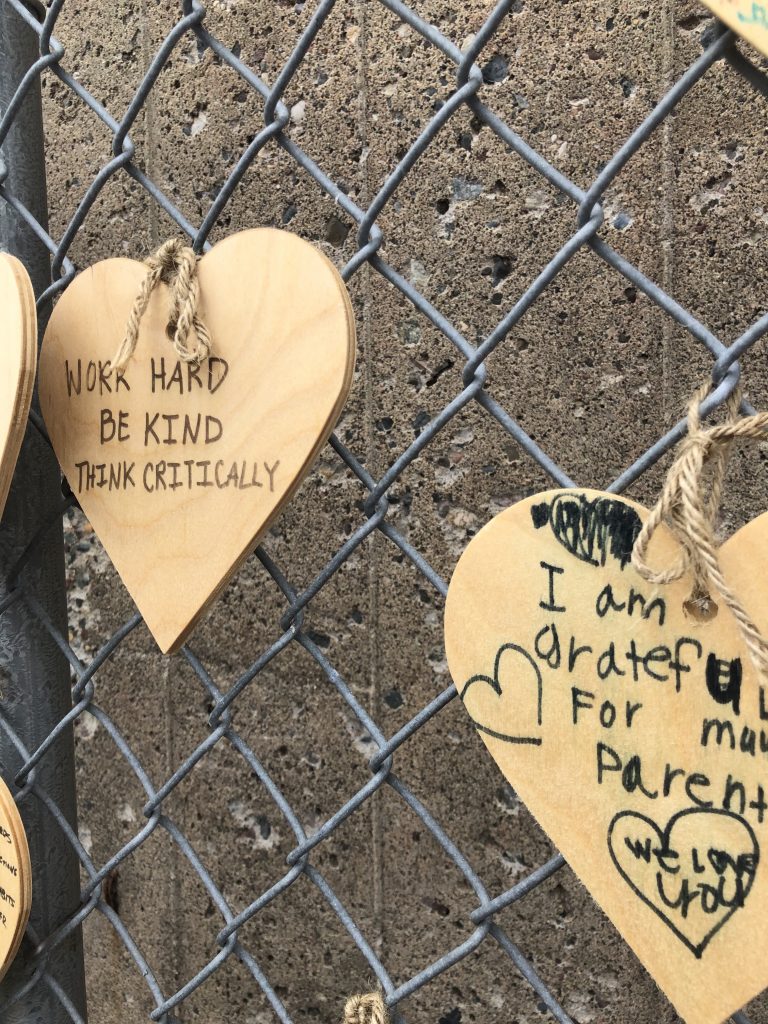
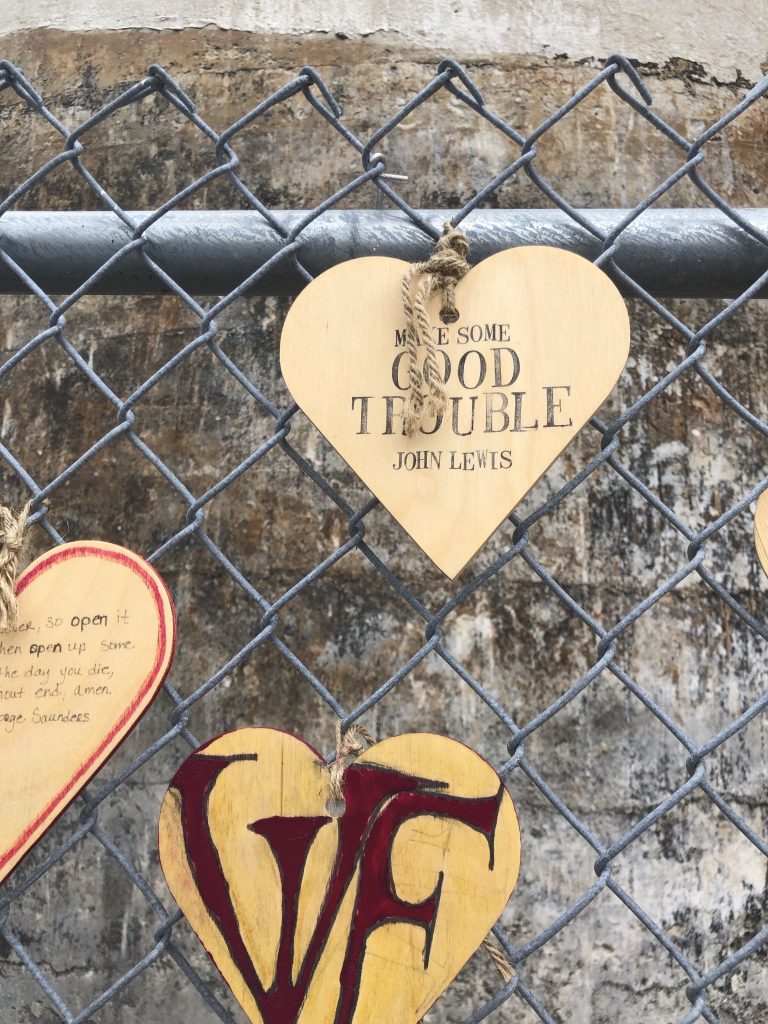
We are a collection of stories. We, as a community, contain infinite wisdom and invite the opportunity for endless narratives to shine through and be told. And the beauty of these stories is that they both reflect and define the human experience. Perhaps it is no surprise, then, that these stories of pain, resilience, and hope are also peppered with moments of levity and comic relief.
U R cool. Don’t forget.
It’s been 126 days since I have backed up my computer.
Time flies like an arrow. Fruit flies like a banana.
2020: Peace. Love. Unicorns. -Love Lucy
Look for the good in the bad and wear your damn mask. This soon will pass – don’t be sad. -A haiku
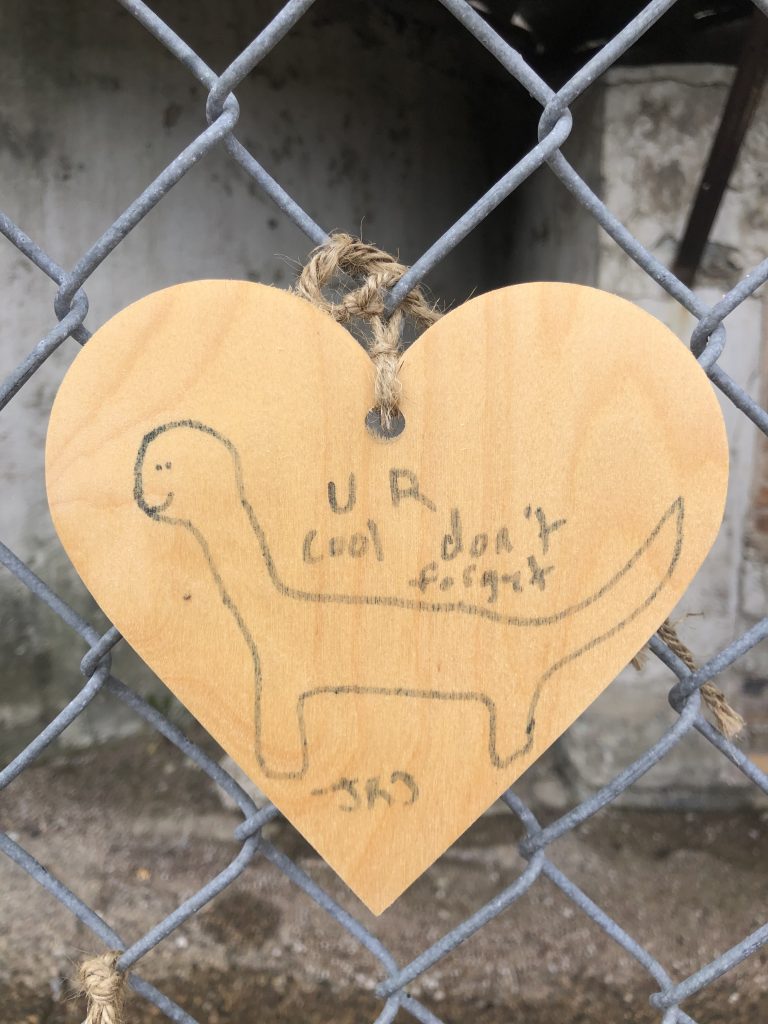
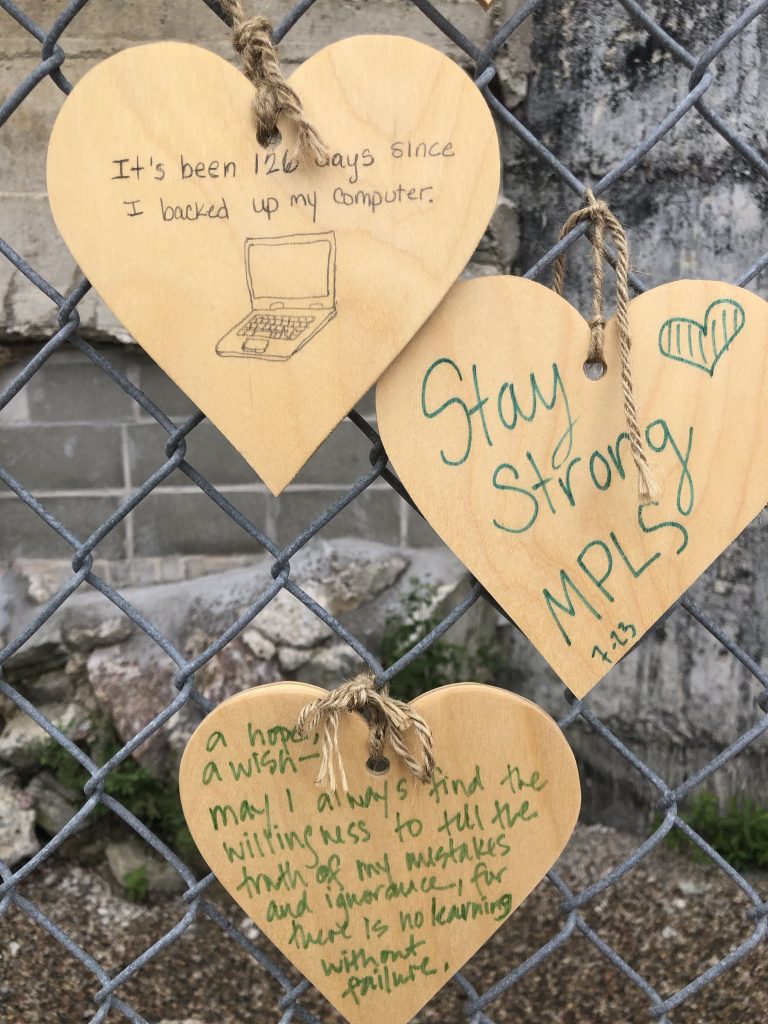
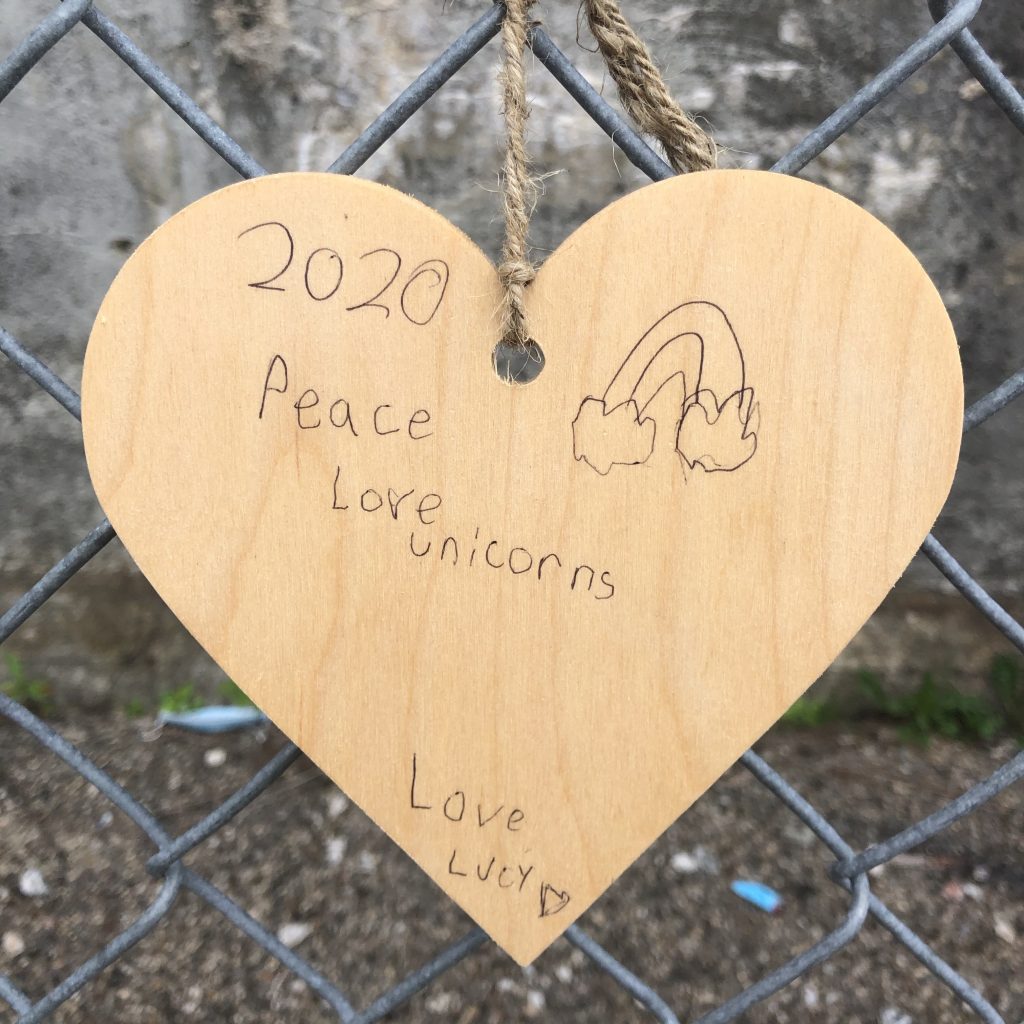
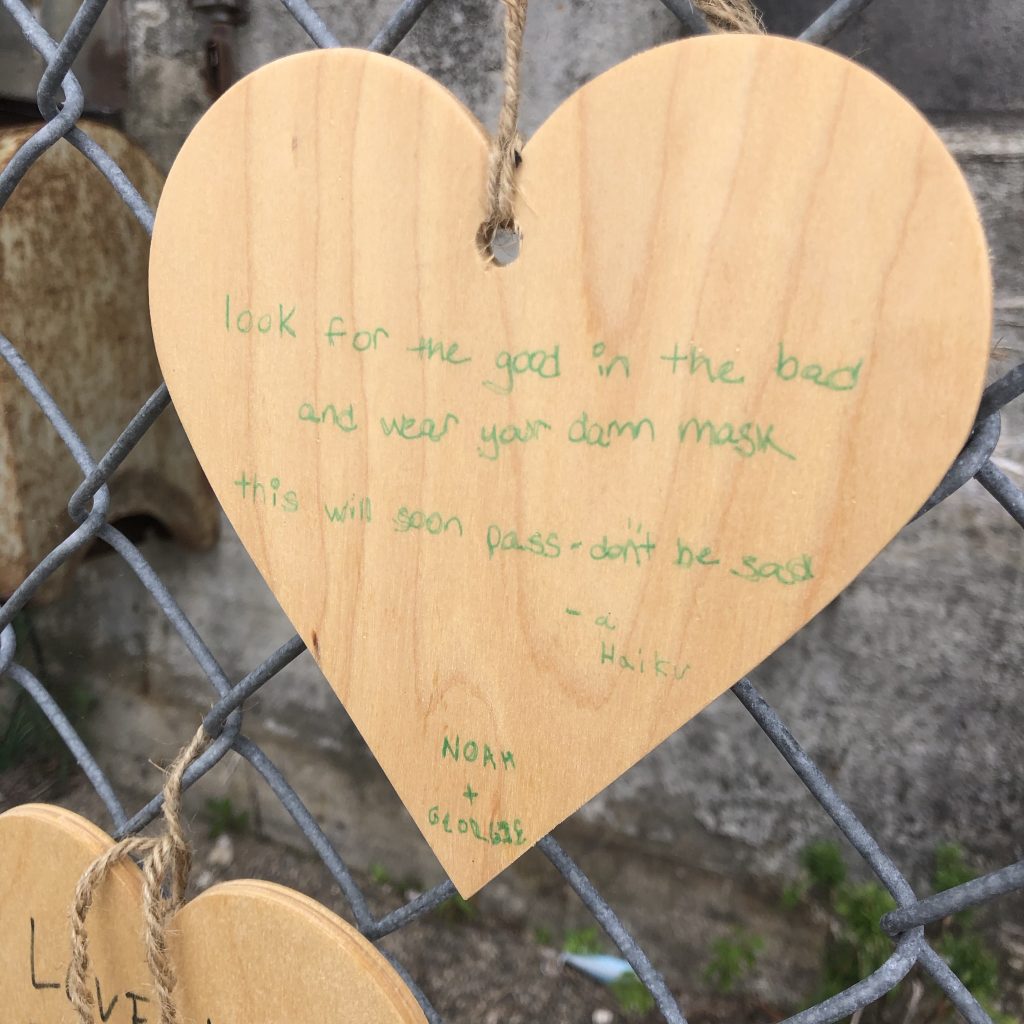
The earnest dreams. The whimsical child-drawn images. The urgent demands for change. These are the moments where our hope shines through, where our humor and goodwill triumph over uncertainty, fear, and chaos. The times when time itself stands still and is forced to reconcile the sheer willpower, tenacity, and resilience that is the human spirit.
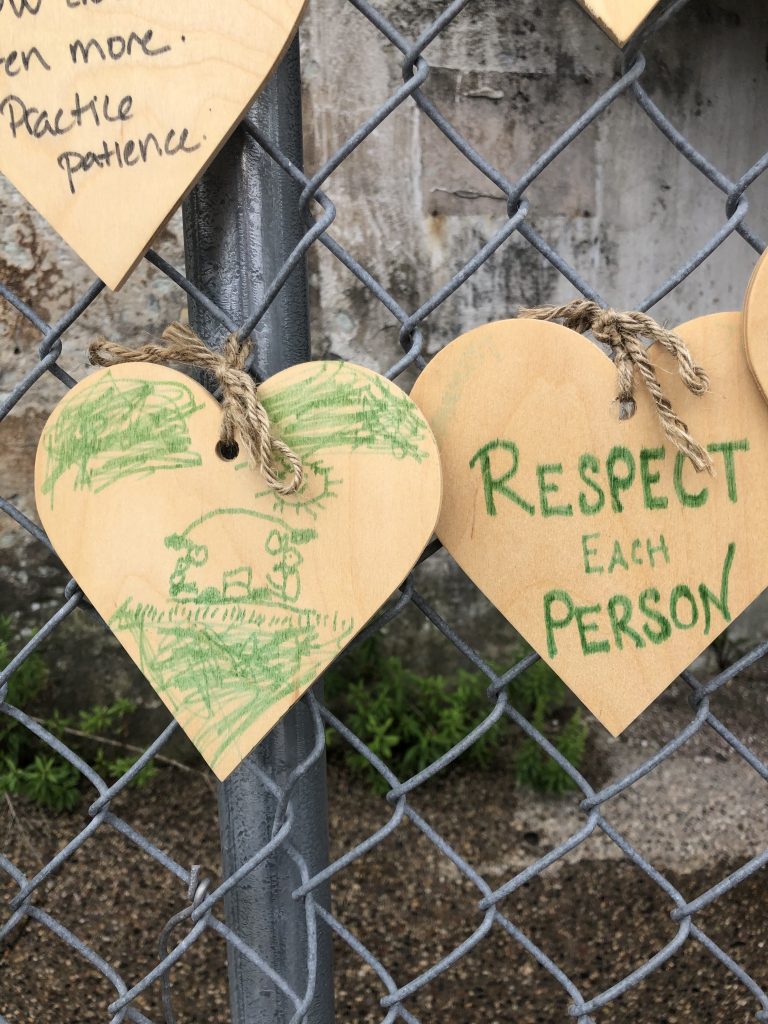
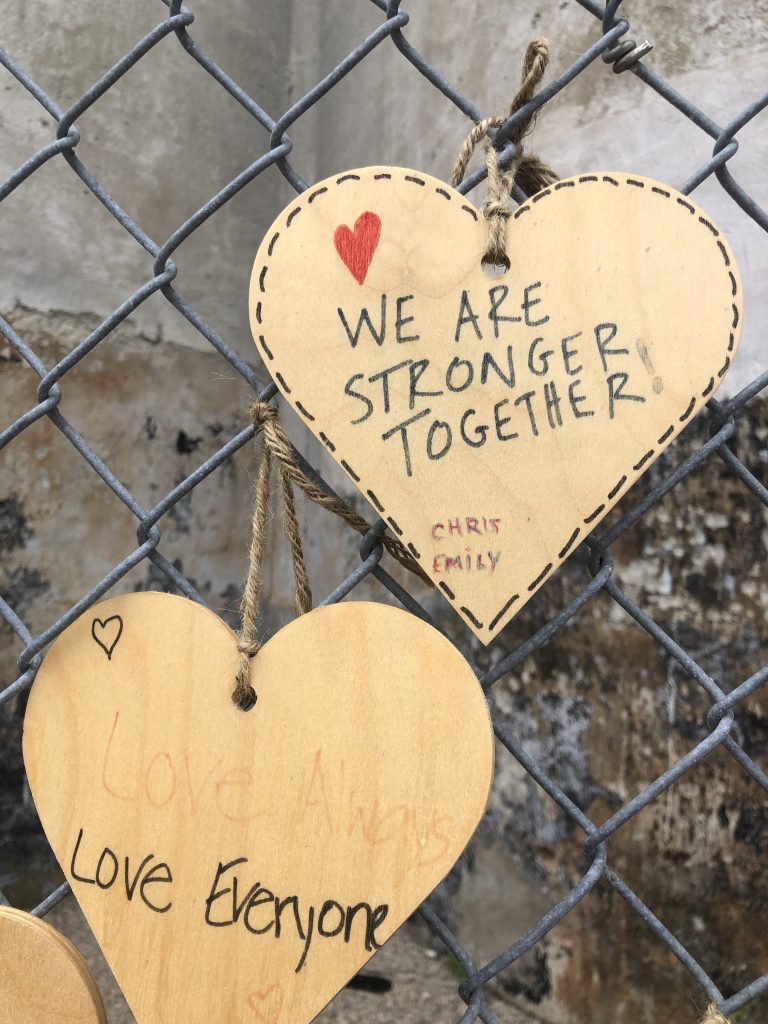
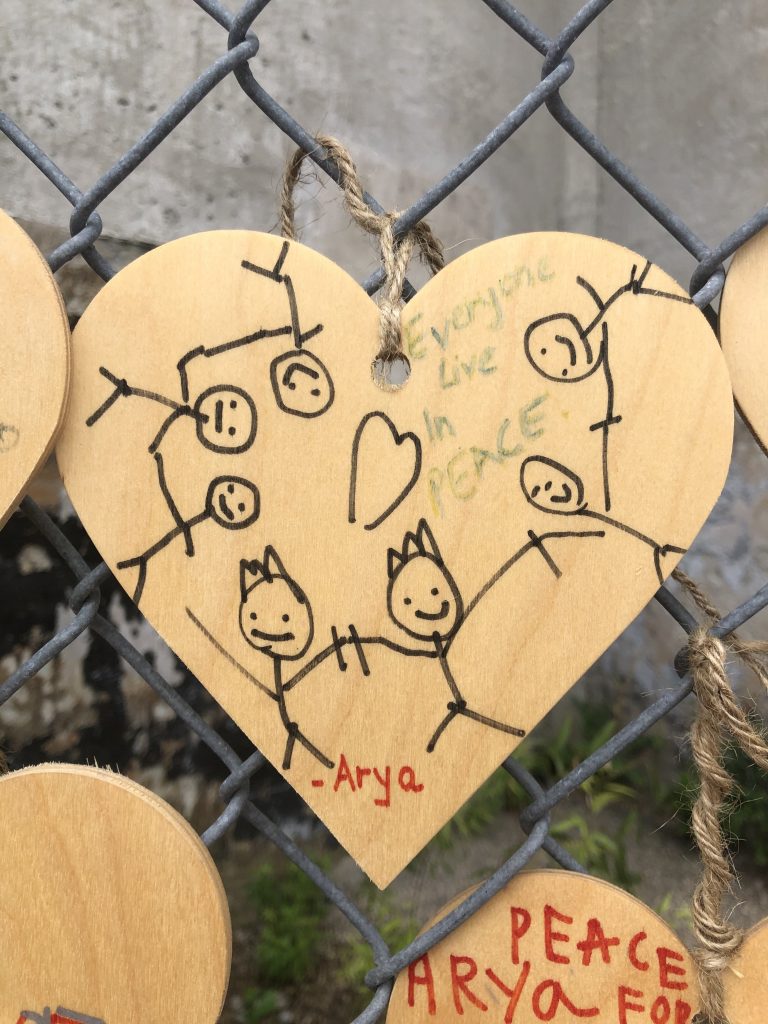
It’s important to acknowledge this moment has power. Our response to this moment has power. It matters. As easy or tempting as it might be to demonize 2020 and write it off as some sort of freak accident, it’s important to realize the “bad” isn’t resigned to one year alone. At the risk of sounding cynical, 2021 has the ability to evolve into an equally catastrophic year: But only if we let it.
Based on the messages written on these hearts—written on our hearts—I don’t think we will.
Like all hard things, this too shall pass. In the interim, let’s choose to embrace the moment and thank God we have each other to weather this storm. For this connection, this solidarity, this collective human heart is a beautiful thing, indeed.
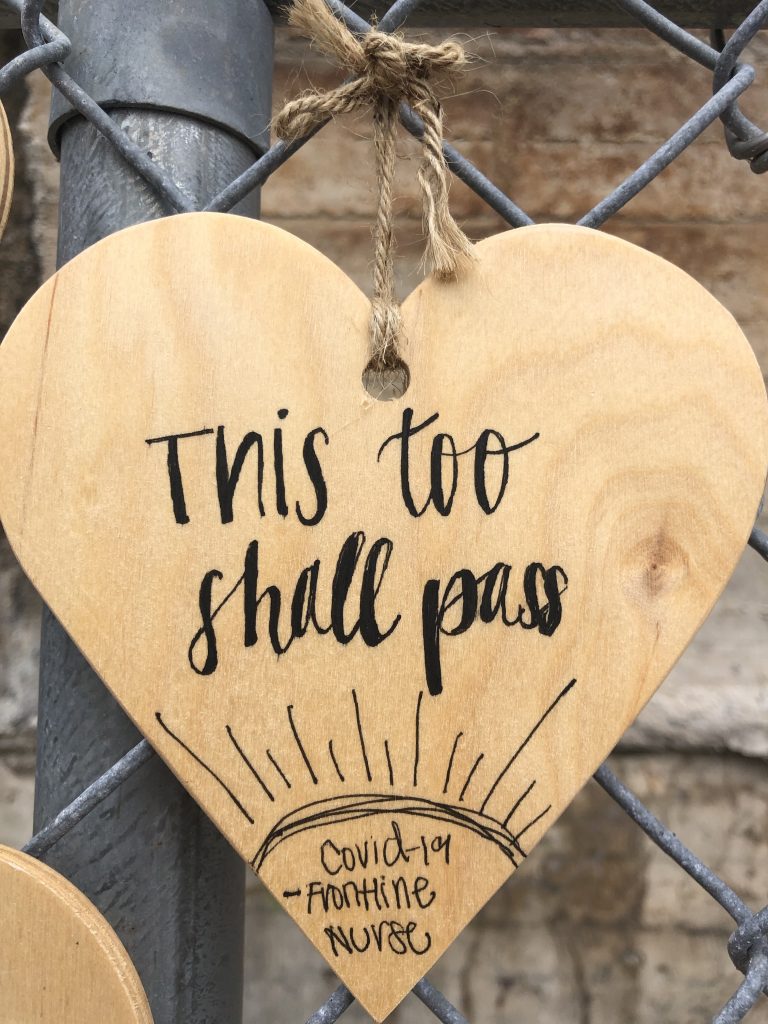
[1] What do you do different now?

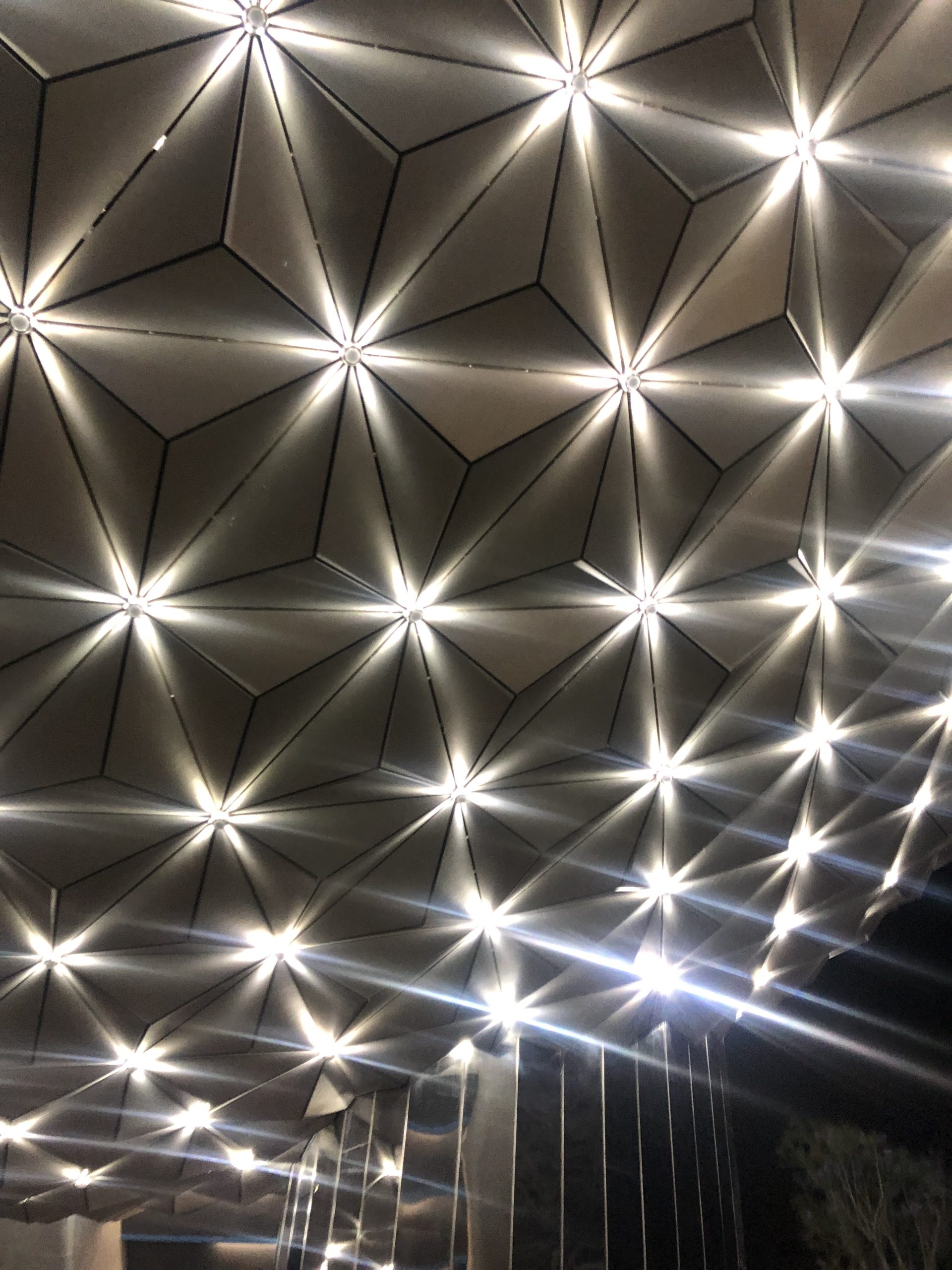

Comments are closed.